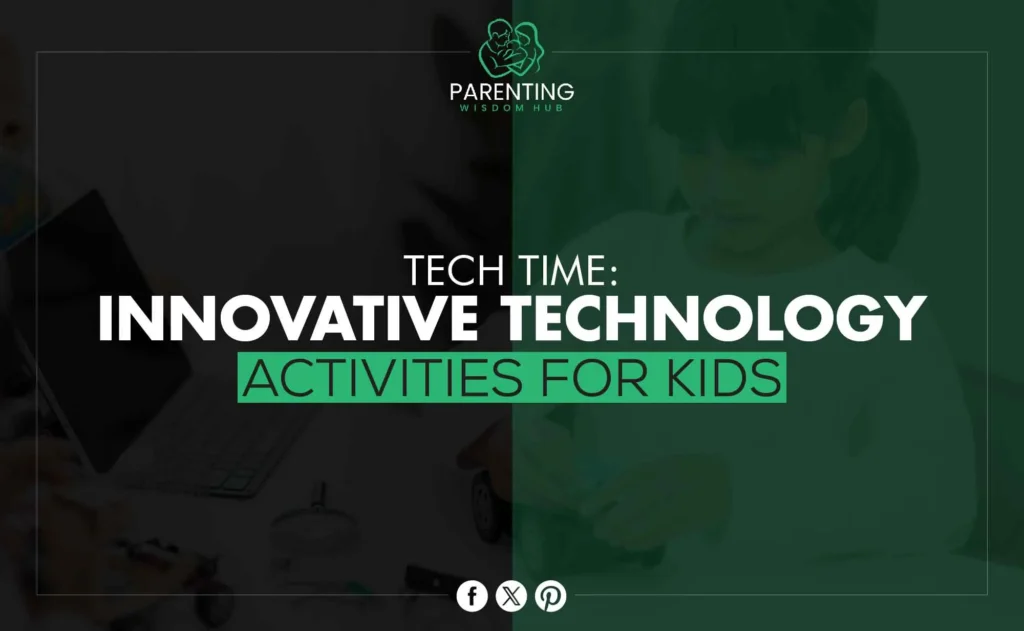Introduction
Today’s fast-paced digital environment makes exposing kids to technology crucial. Not simply keeping up with trends but giving the next generation the skills they need to succeed. This blog article discusses new technology activities for kids that engage and entertain. This resource is for parents encouraging STEM learning at home, educators creating exciting classes, and STEM enthusiasts inspiring others. We’ll cover everything from kids coding projects to hands-on experiments to amuse and educate youngsters.
The Importance of Technology in Early Education
Technology has permeated our everyday lives and education. Technology in early education encourages critical thinking, creativity, and cooperation. The future requires digital literacy; therefore, it prepares them. We foster lifelong learning by engaging youngsters with tech.
Children are inherently inquisitive, and technology enables infinite exploration and discovery. Early tech exposure may promote math and scientific curiosity, helping kids appreciate STEM areas later in life.
Parents and teachers help kids navigate technology. Provide age-appropriate materials and activities that foster discovery and experimentation. This builds confidence and problem-solving abilities in kids.
Coding for Kids
It is not only grownups or computer scientists who can code. Like reading and writing, it’s an essential skill for kids. Coding exercises for kids teach programming concepts in a fun manner. Children may code in kindergarten using numerous platforms and applications.
Coding helps kids learn how to think logically and solve problems. It makes them feel more profoundly and approach issues in a planned way. Coding teaches kids to break down complex problems into steps they can handle. This way of thinking will help them in all parts of their lives.
Interactive and age-appropriate coding systems like Scratch and Tynker are available for kids. Visual programming languages let kids snap code pieces to create games, animations, and tales. This method makes coding enjoyable and easy, engaging them while teaching essential skills.
Incorporating Educational Technology in the Classroom
Technology in the classroom may improve learning and teaching. New educational tech tools engage pupils and accommodate varied learning styles. Technological integration allows teachers to build dynamic and interactive learning environments.
Tablets, interactive whiteboards, and instructional applications are examples of classroom technology. These technologies let students work together, study, and present their results creatively. Educational technology encourages active learning and student accountability.
Technology allows teachers to customize classes for students’ needs and interests. This method lets students learn complicated subjects at their own speed, enhancing retention. Technology also gives instructors tools to add real-world examples and current knowledge into their teaching.
Hands-On STEM Learning Activities
STEM education stresses science, technology, engineering, and math integration. Hands-on activities make these topics more approachable and fun for youngsters. Practical STEM activities like constructing essential devices and doing scientific experiments complement classroom learning.
Children learn, experiment, and invent via STEM activities. They learn critical thinking and problem-solving while having fun. Kids learn to experiment and learn from failures by working on creative and persistent projects.
Online tools help parents and teachers organize STEM activities at home and in the classroom. Projects for different ages and interests are available on websites, kits, and community activities. Provide the support and advice needed to foster a lifelong love of STEM.
Robotics for Kids
Both kids and adults are interested in robotics because it is exciting and new. Robotics is a fun way for kids to learn about building, programming, and imagination simultaneously. Building and programming robots is fun for kids to learn about technology and how tools work.
LEGO Mindstorms and VEX Robotics kits provide kids with everything they need to construct robots. These kits let students program and build their inventions using easy-to-use instructions and software. Children create and test robots together, which promotes cooperation.
Robotics contests may inspire innovation. These activities encourage creativity and critical thinking by having youngsters use their robots to solve real-world challenges. Competitions boost confidence and teach life skills like time management and resilience.
Virtual Reality Experiences for Kids
A new technology called virtual reality (VR) provides intense and exciting teaching experiences for kids. Kids can explore virtual worlds from the comfort of their classrooms or homes and go to faraway places, return in time, or even learn about the human body.
Kids are interested in VR because it makes learning fun and involved. As they learn more about the world around them, they can walk with dinosaurs, explore space, and see important historical sites. Virtual reality helps people learn by giving them background and viewpoints that regular ways can’t.
There are many VR systems and apps made for learning. These tools have good material for all ages and work with cheap VR machines, so many families and schools can use them. Using VR in schools can make kids interested in learning and make them love it.
Digital Art Projects for Children
Digital art mixes technology and imagination, giving you a wide range of ways to express yourself. Kids can try out different digital tools to make designs, videos, and drawings. They can also learn about graphic design and digital media through digital art, which helps them be more creative and improve their fine motor skills.
Tools and software for young artists include Procreate and Tayasui Sketches. These tools let students try numerous styles and methods with easy-to-use interfaces and many capabilities. Digital art projects foster creativity and self-expression, boosting creative confidence.
Parents and educators may encourage kids to share digital creations with family, friends, and online groups. This improves confidence and gives feedback and motivation. Digital art offers students distinct skills that may lead to creative careers.
Building a Tech-Savvy Generation
Kids will need to be able to use technology in the future, so letting them play with it now is a good idea. By getting kids involved in cool tech activities, we can raise a group of problem-solvers, critical thinkers, and lifelong learners. They can use these skills well in any job they choose.
Parents, educators, and STEM enthusiasts help kids navigate technology. Through help, tools, and encouragement, we can inspire young minds to explore technology’s endless potential and raise a tech-savvy generation to meet tomorrow’s issues.
If you want to find more things to do and tools to use, you could join online groups or attend events and classes. These changes will give you useful information, contacts, and ideas that will help you stay up-to-date and involved in the world of educational technology.
Conclusion
Technology in kids’ schooling is more important than ever. Innovative electronic activities may inspire youngsters to study STEM and provide them with lifelong skills. Many methods exist to excite and teach kids via coding, robotics, digital art, or virtual reality.
The effect is huge, and the possibilities are boundless. Let’s raise a generation of curious, competent, and confident learners eager to conquer the world. Enter the fascinating world of instructional tech and start your child’s digital experience now!


